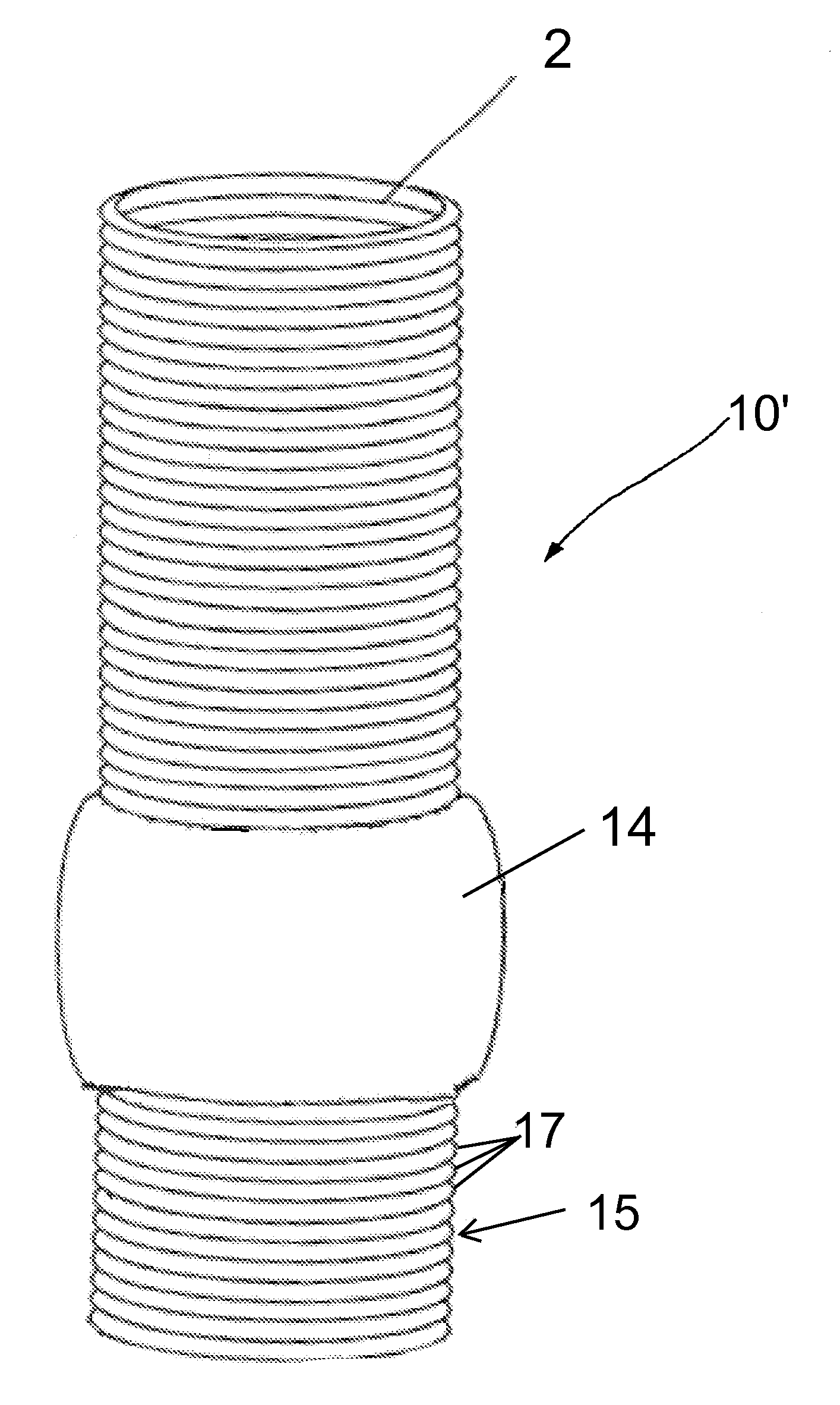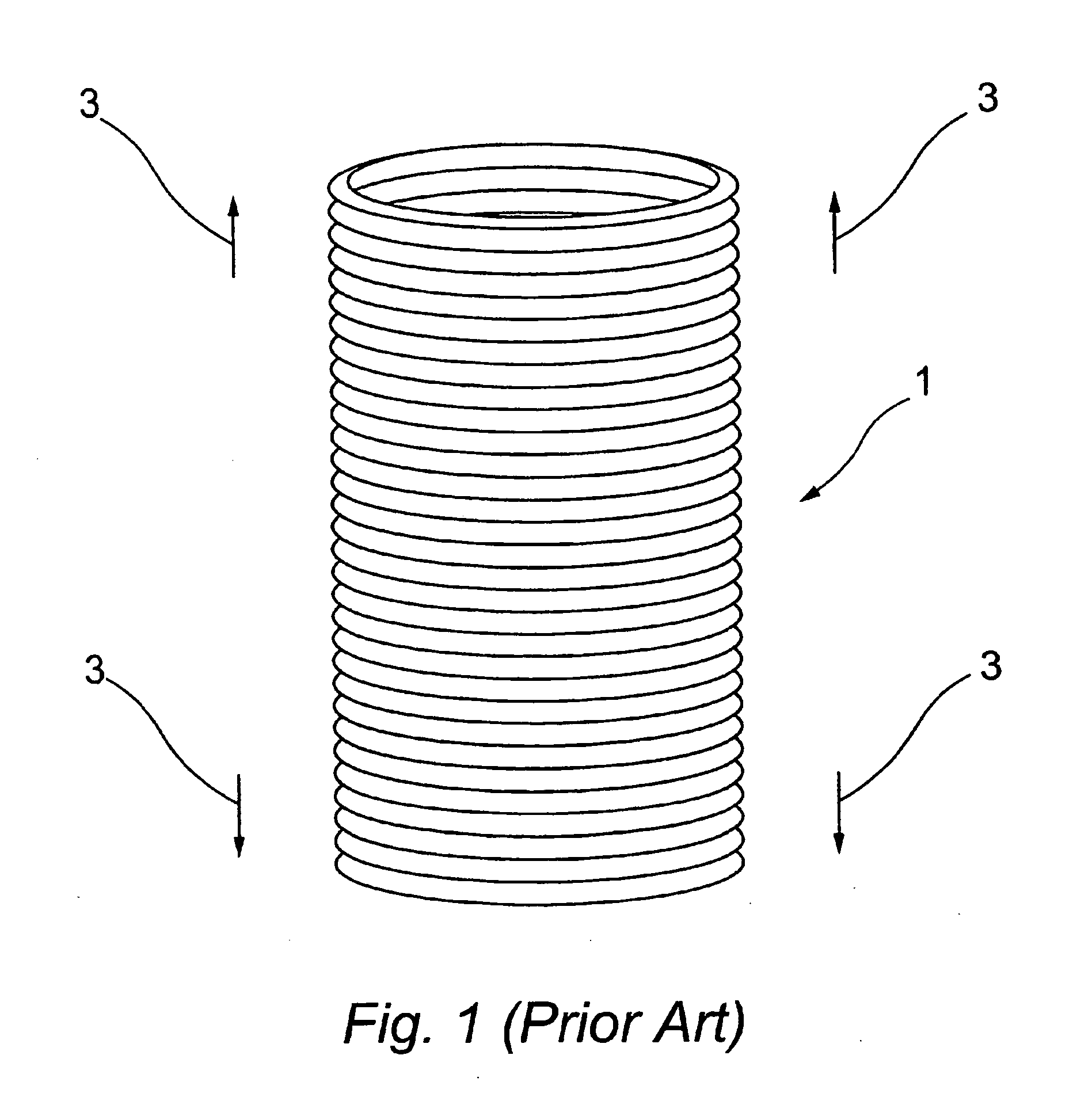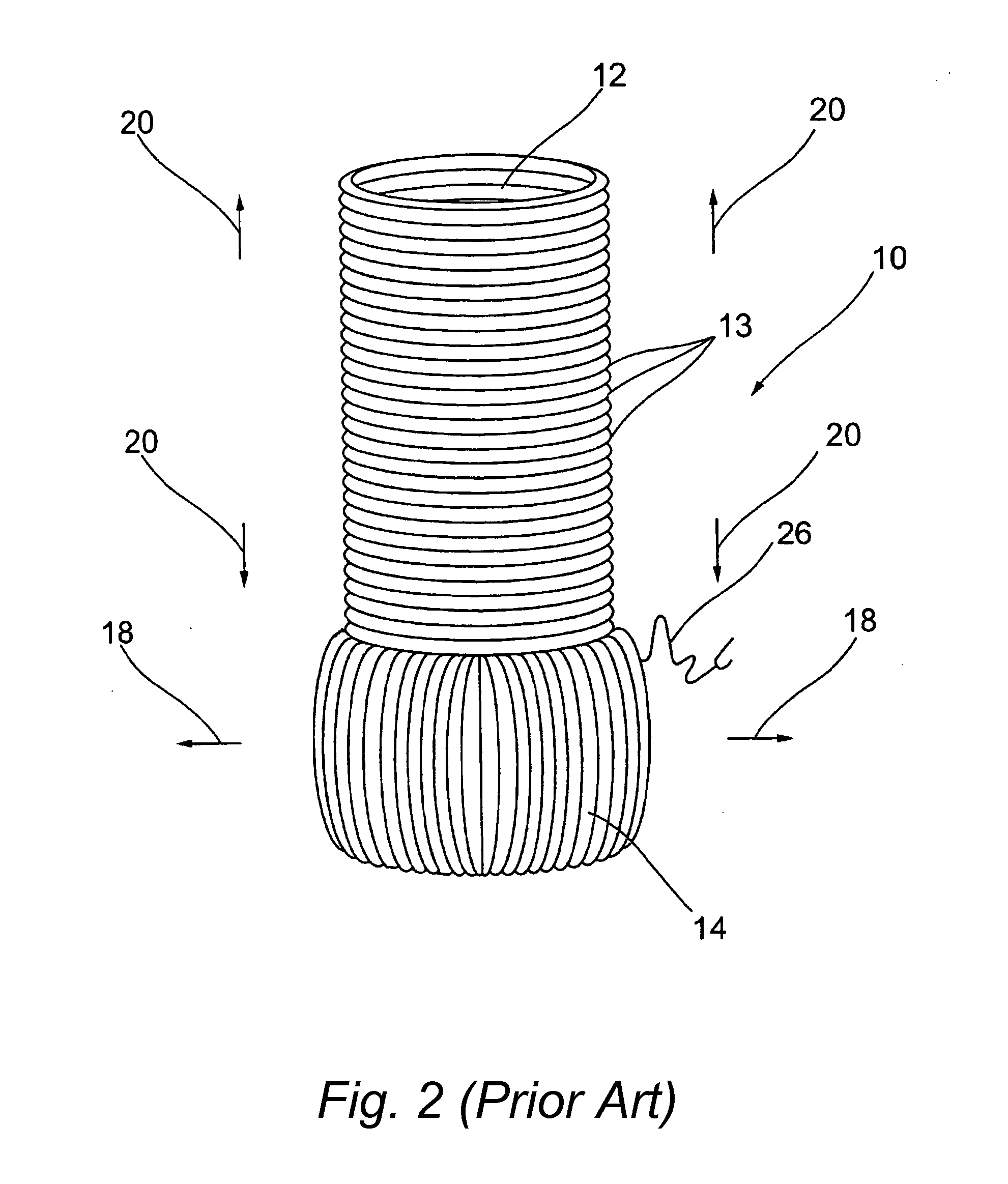Single continuous piece prosthetic tubular aortic conduit and method for manufacturing the same
- Summary
- Abstract
- Description
- Claims
- Application Information
AI Technical Summary
Benefits of technology
Problems solved by technology
Method used
Image
Examples
Embodiment Construction
[0026]FIG. 1 shows a standard aortic conduit 1 of the type currently used in aortic surgery. This conduit is made of DACRON but any suitable biocompatible material such as polytetrafluoroethylene (PTFE) could be used. This standard aortic conduit 1 includes circumferentially extending pleats so that the corrugations lie perpendicular to the longitudinal axis of the prosthesis. These corrugations provide a degree of expansion in the longitudinal direction (indicated by the black arrows 3 in FIG. 1) and the conduit 1 can therefore significantly increase its length.
[0027]FIG. 2 shows a preferred embodiment of the conduit of the invention. The conduit 10 comprises two distinct tubular portions having a common axis. The first upper portion 12 is made from a standard aortic conduit similar to the one shown in FIG. 1 and is provided with circumferentially extending corrugations 13 successively provided along the axis of the tubular first portion 12. The second lower portion, or skirt porti...
PUM
| Property | Measurement | Unit |
|---|---|---|
| Diameter | aaaaa | aaaaa |
| Resilience | aaaaa | aaaaa |
Abstract
Description
Claims
Application Information
 Login to View More
Login to View More - R&D
- Intellectual Property
- Life Sciences
- Materials
- Tech Scout
- Unparalleled Data Quality
- Higher Quality Content
- 60% Fewer Hallucinations
Browse by: Latest US Patents, China's latest patents, Technical Efficacy Thesaurus, Application Domain, Technology Topic, Popular Technical Reports.
© 2025 PatSnap. All rights reserved.Legal|Privacy policy|Modern Slavery Act Transparency Statement|Sitemap|About US| Contact US: help@patsnap.com



